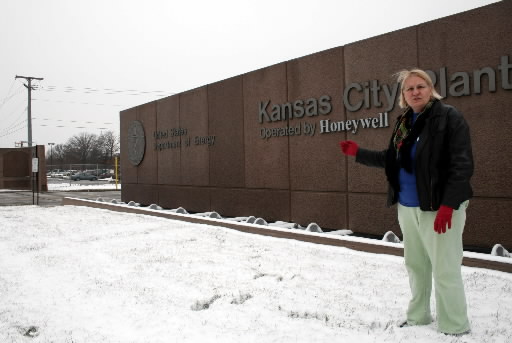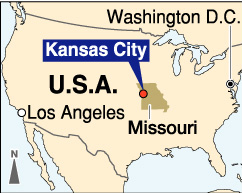Nuclear Weapons Can Be Eliminated: Chapter 1, Part 2
Mar. 12, 2009
Chapter 1: Superpower at a turning point
Part 2: Nuclear infrastructure
by Yumi Kanazaki, Staff Writer
Turning point for nuclear policy
The residents of Kansas City, Missouri refer to this Midwestern city as the “Heart of America.” President Harry Truman, who gave the orders to drop atomic bombs on Hiroshima and Nagasaki, was a native of the area. Now Kansas City is a proving ground to see whether or not President Barack Obama will change the country’s nuclear policies.
The Kansas City Plant, which manufactures 85% of the controls, ignition devices and other components used in nuclear warheads, is located 20 kilometers south of the city center along a road that runs beside a stream. The large facility is surrounded by a 6-foot concrete wall, and the inside cannot be seen.
A plan has been in the works to relocate the plant’s aging facilities to a new site 12 kilometers south of the current location by 2013. The move is part of a $200 billion (18 trillion) project to realign nuclear weapons facilities--“nuclear infrastructure”--throughout the U.S. The goal of the plan, which will affect eight facilities, including the Los Alamos National Laboratory, is more efficient manufacture of nuclear weapons.
Ann Sullentrop, 57, a local peace activist who served as my guide, frowned as she stood in front of the facility’s main gate. “If the KC Plant relocates, it will be possible to manufacture nuclear weapons for decades longer. It’s a waste of our tax dollars,” she said.
The National Nuclear Security Administration evaluated the environmental impact of seven of the plants affected by the realignment. The KC Plant, which does not handle nuclear materials, was not included. Its final report was published last October. Legal procedures for the realignment of the nation’s nuclear infrastructure have entered the final phase.
Realignment will mean the maintenance and enhancement of U.S. nuclear weapon production capacity, and implementation of the plan will directly contradict President Obama’s expressed desire for a nuclear-free world.
There was a flurry of activity in Washington in mid-January in anticipation of the inauguration. In a meeting room at the offices of the New America Foundation, Stephen Schwartz of the Monterey Institute of International Studies in California presented a report to about 20 researchers on the results of an investigation into the amount of money the U.S. government spends to maintain its nuclear weapons capability and on related purposes.
According to the report, the total amount in the appropriation for fiscal year 2008 (October 2007 through September 2008) for nuclear weapons-related expenses was at least $52.4 billion (4.8 trillion). This is equivalent to Japan’s entire defense budget. Schwartz noted that the total amount is greater when covert Defense Department plans are included.
The plan for the realignment of nuclear facilities, with its tremendous budget, is a product of the Bush administration. It is now up to Mr. Obama and the U.S. Congress to decide what to do about the plan and to set a course for U.S. nuclear policy.
(Originally published on February 12, 2009)
To comment on this article, please click the link below. Comments will be moderated and posted in a timely fashion. Comments may also appear in the Chugoku Shimbun newspaper.









